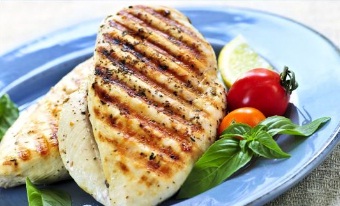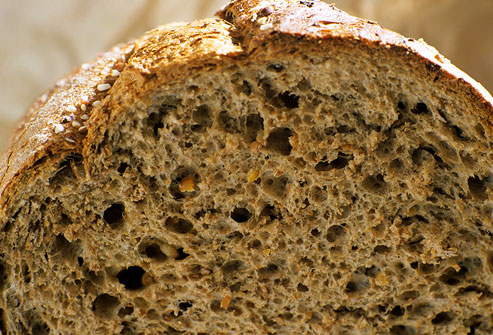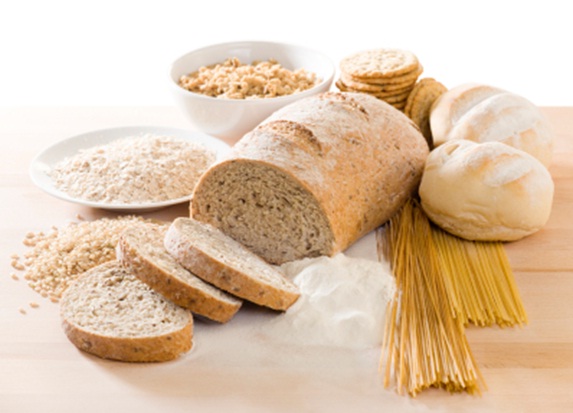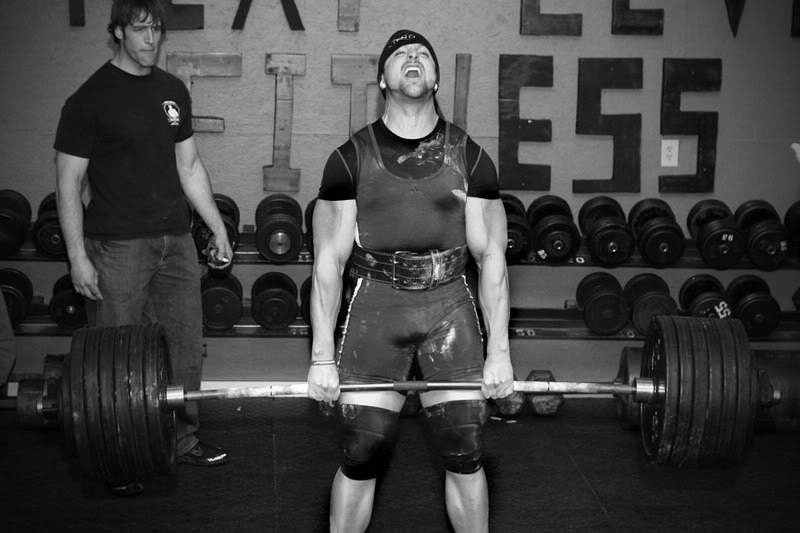Pre-Contest Dieting: Obviously the most pertinent issue regarding pre-contest preparation is the diet aspect of preparation. It is not enough to just clean up what you eat, it must be far more drastic than that.

When you see the winner of a bodybuilding competition onstage, rest assured they tracked their calories, carbs, proteins, fats, and never missed meals.
If you want to do well in a bodybuilding competition, you should expect to do nothing less. Before I begin talking about a proper pre-contest diet, we need to examine exactly how long a person should diet for a contest. The first thing that should be done is an “assessment” of your body. Look yourself over and be honest about your faults, strengths, and about how long you think it will take for you to get into stage shape.
Importance Of Slow Dieting
 Keep in mind that if you think you have around 25 lbs of fat to lose, you are not going to be able to lose it all in 10 weeks and keep all of your lean body mass. Aim to diet as slowly as possible. The severity of your calorie deficit will, to a large extent, determine how much muscle you retain/lose.
Keep in mind that if you think you have around 25 lbs of fat to lose, you are not going to be able to lose it all in 10 weeks and keep all of your lean body mass. Aim to diet as slowly as possible. The severity of your calorie deficit will, to a large extent, determine how much muscle you retain/lose.
Short periods of high severity dieting (more than 1000 kcals per day below maintenance level) are not too muscle wasting, but prolonging them for more than a few days will certainly cause one to lose a good deal of muscle.
As a general rule of thumb, losing 1 lb of bodyweight per week will allow one to retain most of their muscle mass. One can probably lose up to 1.5 lbs per week and retain most, if not all of their muscle mass (provided their training and nutrition are optimized).
Dieting Too Fast?
If one tries to push their body to lose more than 2 lbs per week for any length of time, then they will begin to experience quite a bit of muscle loss. It is for this reason that I usually try to give myself enough time so that I only need to lose 1-1.5 lbs per week at most. If one is naturally ectomorphic (has an easy time losing weight) however, they may want to diet for a shorter period of time, and I would recommend a time period of 11-15 weeks. If one is naturally endomorphic (has a hard time losing weight), then they may want to lengthen their dieting time to 16-22 weeks. If this is the first time that you have ever done a contest then you would want to also give yourself an extra week as you will probably experience a hitch at some point along the way.
Diet Information
The diet that one follows for their contest will be the single most important determining factor of how well they will place in the competition. A person can have all the mass in the world but if they do not come in razor sharp on contest day, then the mass will mean little. Judges almost always go for conditioning over size. To design a proper diet one should give themselves adequate time to lose the necessary body fat to achieve that aforementioned shredded look.
Being said, what kind of diet is optimal for a person to follow?
Well The Diet Should Have Three Main Goals:
- Spare as much muscle mass as possible.
- Lose as much fat as possible.
- Not cause the person to lose intensity in the weight room.
Unfortunately, these goals all seem to contradict each other.
When the body is in a starved (calorie deficit) state, muscle loss can occur although a calorie deficit is required to lose fat. This calorie deficit will also cause one to feel less energetic. To get around the negatives, there are small adjustments and little tricks to aid in the accomplishment of the positives.
Before discussing the diet, it is important to discuss the three macronutrients and their roles.
Protein
Protein is probably the single most important macronutrient for the purposes of maintaining muscle on a diet. Dietary protein is hydrolyzed (broken down) into it’s constitutive amino acids during digestion. These amino acids are released into the bloodstream where they may then be taken up by cells (usually muscle cells). Dietary protein is also very important as amino acid availability is the single most important variable for protein synthesis to occur. This means that protein synthesis increases in a linear fashion (directly proportional to plasma amino acid concentrations) until the plasma amino concentrations are approximately twice that of normal plasma concentrations. To generalize for the less scientifically inclined, ingesting enough dietary protein is very important for someone who is looking to gain muscle, or maintain it while dieting. Dietary protein spares muscle by helping increase protein synthesis (and thus induce net muscle gain) and by acting as a muscle sparing substrate as it can be used for glucogensis (synthesis of glucose). Dietary protein however, is not as muscle sparing as are carbohydrates when used as a substrate for glucose synthesis. Protein is also a very “expensive” molecule for your body to use as energy.
The body would much rather store amino acids than oxidize them as protein oxidation yields less net ATP produced per amino acid when compared to fat or carbohydrates. Therefore, it can be stated that dietary protein has a thermogenic effect on the body.

Carbohydrates
Carbohydrates have probably gotten the worst reputation of the macronutrients due to the ketogenic dieting rave. Ketogenic dieting refers to reducing carbohydrate intake to practically nothing, while simultaneously raising fat and protein intake. With little glucose for the brain to utilize for energy, the body will begin producing ketones. Ketones are by-products of fat oxidation and the brain can use ketones for energy. This does indeed have a potent fat burning effect, as insulin levels will be severely reduced due to lack of carbohydrate intake. Low insulin levels correlate with high rates of fat oxidation. Indeed, the ketogenic diet may be the single best way to lose the maximum amount of body fat in the shortest amount of time. However, if you will quickly refer to our goals during a pre contest diet you will notice that maintaining muscle is number one on our list, with fat loss second. If one has not properly scheduled enough time to lose body fat and they are in need of drastic measures, then using a ketogenic diet may be their only choice in order to become contest-ready in time. Unfortunately, they will not maintain an optimum amount of muscle mass.
For those who have given themselves ample time to prepare, I do not suggest using a ketogenic diet. Instead, I recommend reducing carbohydrates, but keeping them high enough to possess the muscle sparing benefits of carbohydrates while still losing body fat.

Importance Of Carbs While Cutting
There are several main reasons that I recommend retaining carbohydrates.
The first reason being that carbohydrates are much more muscle sparing than fats during times of stress when glucose becomes a primary source of fuel (i.e. anaerobic exercise, injury, infection, etc). The muscle sparing effects of carbohydrates occur via several different mechanisms. When the body is in a low energy state, it may try to produce energy by converting amino acids to glucose. Carbohydrates prevent this since they can be easily broken down (and converted if need be) to glucose molecules. Carbohydrates then spare dietary protein from oxidation and these proteins can be stored rather than oxidized.Carbohydrates are also very muscle sparing during exercise. When one lifts heavy weights, the primary pathway that is used to produce ATP (cellular energy currency) is the anaerobic or glycolytic pathway (as the name implies this pathway operates in the absence of oxygen). The only substrate for this pathway is glucose, which can be obtained from dietary carbohydrates or by breaking down glycogen (the cell’s stored form of glucose).
If one is on a ketogenic or extreme “low carb” diet however, the body will need to utilize another source to synthesize glucose from.
Since glycogen levels are low on a ketogenic diet, the body will actually convert amino acids to glucose and this glucose will be used in the anaerobic pathway to produce ATP. These amino acids will come from dietary protein, amino acids from the cellular amino acid pool, and from muscle tissue. The latter situation is where one would experience muscle loss. Dietary protein would be sacrificed for ATP production and the depleted amino acid pool would not bode well for protein synthesis rates, thus causing a net loss in muscle mass.
Muscle Sparing Carbohydrates
Carbohydrates are also muscle sparing because they are a cause of insulin release. Now I know your thinking, “but Layne, you just said in your intro that low insulin levels were great for fat burning!?”
Yes, you are correct. I did indeed say that low insulin levels are good for fat burning. Insulin inhibits lipolytic (fat burning) activity and must be kept low if one wishes to burn a maximal amount of fat. However, the pesky re-occurring theme of maintaining muscle prevents us from totally excluding insulin from our pre-contest diet arsenal, as insulin happens to be one of the most anabolic/anti-catabolic hormones in the body. Insulin binding to the cell membrane causes all sorts of reactions in your body that are beneficial to maintaining and gaining muscle tissue. Insulin inhibits protein breakdown and amino acid oxidation, thus promoting muscle maintenance or gain. Insulin also has an antagonist (inhibitory) affect with regards to several catabolic hormones, including cortisol. Cortisol is a hormone that is released during times of stress such as dieting, lifting, injury, etc. Cortisol produces glucose by breaking down proteins, including muscle tissue. Cortisol is the primary catabolic hormone that is released when one lifts or does any kind of activity.
Insulin release inhibits the activity of cortisol by preventing its release from the pancreas, thus sparing muscle tissue from cortisol’s catabolic effects.

Furthermore, it is interesting to note that long-term exposure of cells to ketones (i.e., ketogenic diet) retard insulin-induced activation of the insulin surface receptor.
This causes one to become extremely sensitive to carbohydrates when they begin ingesting them again after they finish dieting and could lead to an undesired post diet fat gain. Carbohydrates act to maintain muscle mass while dieting by maintaining cellular osmotic pressure and cell volume. Cell size is an indicator of the “state” that the body is in. When cells are of large volume, it signals that the body is in a fed state. When cell volume is low it signals that the body is in a starved state. Without delving too far into the science behind this, trust me when I say that you would like your body to think it is in a fed state as this will increase the levels of fat burning hormones and anabolic hormones. Cell size also indicates the anabolic state of the cell. When cell volume is high, protein synthesis rates increase. If cell volume drops, then protein synthesis levels drop. It is easy to infer we would like to maintain cell volume, especially when dieting.
The problem with extreme low carbohydrate diets is they cause severe reduction in cell size.
The Glycogen Factor
The body stores carbohydrates inside cells as glycogen. For every gram of glycogen stored, the body stores around 2.7 g of water. Therefore, cells that have greater glycogen levels will also have more volume. One can see then how low carbohydrate diets severely decrease cell size due to severe glycogen depletion. Concluding, carbohydrates help maintain muscle by increasing cell volume. One more issue to consider is performance. If you refer to the goals of a pre-contest diet, you will see that number three maintains that you must keep a high level of intensity in the gym. This is important for several reasons. If performance begins to suffer, then a person will undoubtedly lose strength. This could lead to a subsequent loss of muscle mass due to decreased stimulation from a decreased training overload. Therefore, it is important that performance be kept at an optimal level. Low glycogen levels have been associated with increased fatigue and decreased performance in athletes (endurance, strength, power output, etc).
The Research
Several studies have shown that consuming adequate amounts of carbohydrates before, during, and after exercise may attenuate the increased fatigue and increase performance.

It is worth noting that one such study concluded that “the rate of recovery is coupled with the rate of muscle glycogen replenishment and suggests that recovery supplements should be consumed to optimize muscle glycogen synthesis as well as fluid replacement.”
It can therefore be concluded that an adequate supply of carbohydrates is crucial for maintaining performance and for proper muscle recovery. Fats are very important molecules and are considered essential to ones survival. Indeed, fats are involved in many of the body’s processes which are required for survival. Several key functions of fats in the human body are for energy storage and hormone synthesis. They are the body’s preferred source of stored energy and the most efficient molecule for the body to burn. (in terms of energy yield per gram, 9kcals/gram). The main hormone that fats impact which we are concerned with is testosterone. When calories are restricted, testosterone levels will drop, as the body will suppress its release of anabolic hormones in order to spare nutrients for oxidation (energy production).
This makes perfect sense: the body senses it is “starving” and thus it represses it’s anabolic hormones to prevent nutrients from being used to increase tissue mass and spares them for energy production.
Fat Intake & Testosterone
That’s the first hit against testosterone production. Drastically lowering your fat intake is another hit against testosterone production since fatty acids are the substrates for cholesterol synthesis and therefore are also the substrates for testosterone synthesis (cholesterol is converted to testosterone, among other things). Unfortunately, fats are also easily stored as adipose tissue (body fat) So there must be some type of compromise between ingesting enough fat for hormone maintenance (and subsequent muscle maintenance) and reducing fat intake enough to decrease body fat. There has been some research done on the effects of dietary fat on testosterone. The answer to, “how much dietary fat is optimal” is difficult to decipher, as there are major differences in the designs of the performed studies.
This makes it difficult to compare them to each other and come up with a “standard” answer.
Several studies concluded that diets low in fat (under 15% of total calories) significantly decreased testosterone levels while diets higher in fat (above 30% of total calories) increased serum testosterone levels. Rather than continuing with this discussion I will provide a link to an article which covers the subject quite nicely. To simplify everything that I have said, it seems that one should not lower fat below 15% of daily calories unless they would like to face extreme testosterone deficiencies. Likewise, one should not increase fat to say 40% in order to increase testosterone. Although fat increases testosterone to a degree, it is important to remember that testosterone is only a small piece of the larger puzzle. There are many other hormones and factors involved in building muscle other than just testosterone. By increasing fat to extremely high levels, there will be less “space” for carbohydrates and protein, both of which are very important for aforementioned reasons.
As with most things in life, moderation is key.
In order to keep hormone production regular and fat burning in high gear, while allowing enough “space” to supply adequate carbohydrates and protein for muscle sparing purposes I do not recommend increasing fat above 30% of daily calories. In order to come up with macronutrient totals for a diet, it is necessary to assess how many lbs per week one will need to lose to be in contest shape. This is not an exact science, however we can still get a reasonable experience-based estimate. Here are some example calculations so that you may have an understanding of how to go about doing this. For example, we have a subject who is a mesomorph weighing 200 lbs and has 13% bodyfat. Since 3-4% is considered “stage condition”, that means the subject will need to drop roughly 10% body fat which equates to about 20 lbs. To recapitulate, I do not recommend dropping weight any faster than 1-1.5 lbs per week. Since 20 weeks is a long time to diet, let’s have the subject lose about 1.5 lbs per week.
I recommend that one lose approximately 80% of their weight due to calorie restriction and 20% of their weight due to cardio (someone who is ectomorphic should do less cardio, while someone with an endomorphic build should do more cardio).
To lose 1.2 lbs (80%) per week from diet, there must be a 600 kcal per day deficit from diet. To lose the other .3 lbs (20%) per week from cardio, one should perform 3 cardio sessions per week, which burn 350 kcals per session. The best way to determine one’s caloric intake required to lose fat at a certain rate is to chart calorie intake for a period of a few weeks and try to determine at what level the subject does not gain weight (this is the caloric baseline).
For those who do not exercise this method, a rough estimate can be made using the following strategy.

Utilize The Subsequent Equations To Find Your Caloric Baseline:
- Mesomorphs – bodyweight x 15.
- Ectomorphs – bodyweight x 16-17.
- Endomorphs – bodyweight x 13-14.
So for our subject; 200 X 15 = 3000 kcals per day. This is the subject’s caloric baseline (roughly). So if he wishes to lose 1.2 lbs per week from dieting (caloric restriction of 600 kcals per day); 3000 – 600 = 2400 kcals per day.
Meal Frequency Is As Follows:
- Mesomorphs – eat every 2.5 – 3.5 hours.
- Ectomorphs – eat every 2 – 3 hours.
- Endomorphs – eat every 3.5 – 5 hours.
Protein Intake
The “golden standard” protein intake for a bodybuilder is around 1 g/lb of bodyweight. This will need to be increased while dieting. Protein is a thermogenic macronutrient key in sparing muscle tissue when in a caloric deficit (see aforementioned section on protein).
I recommend the following protein intakes for different body types:
- Mesomorphs – 1.2g/lb – 1.3g/lb.
- Ectomorphs – 1.4g/lb – 1.6g/lb.
- Endomorphs – 1.4g/lb – 1.5g/lb.*
For our subject, this equates to a protein intake of around 240-260 g protein per day. Let’s go ‘middle of the road’ and set the subjects protein intake at 250 g protein per day. This means 1000 kcals have been devoted to protein intake, leaving us with 1400 kcals for fat and carbohydrate intake.
Fat Intake
Fat intakes are as follows:
- Mesomorphs – 17% – 23% of total calories.
- Ectomophs – 24%-28% of total calories.
- Endomorphs – 23%-28% of total calories (fat intake is increased in order to reduce carbohydrate intake, as endomorphs may have a difficult time losing fat with higher carbohydrate intakes). For our subject, this equates to about 400 – 550 kcal from fat per day (45g – 60g fat per day) Once again, I prefer the ‘middle of the road’ approach and would set his fat intake at around 55g fat per day (495 kcals/day from fat) .
Carbohydrate Intake
Whatever calories that have not been allotted to protein and fat intake will make up total daily carbohydrate intake. For our subject in question, this leaves 2400 (1000 + 495) = 905 kcals per day for carbohydrate intake. This equates to 225g of carbohydrates per day.
I recommend a higher protein intake for endomorph’s while dieting because of the thermogenic effect of a higher protein intake and increased protein turnover, not because they need more protein to maintain muscle mass.
Re-Feeding
One should also incorporate re-feeds into their diet plan. Re-feeds help boost a hormone called leptin, which is the mother of all fat burning hormones. As one diets, leptin levels drop in an attempt by the body to spare body fat. Periodic, proper re-feeding can raise leptin levels and help one continue to burn fat an optimum rate. A person who is lean will need to re-feed more frequently than someone who has a higher body fat percentage. For those who are below 10%, it is probably a wise idea to incorporate re-feeds two times per week.
For those people who are in the 10-15% range, re-feeding every 6-12 days will probably be adequate, for those who are above 15%, re-feeding will probably not need to be done more than once every week to two weeks. Obviously as one loses body fat they will need to re-feed more often.

Re-Feed Days Should Be Planned As Follows:
- Re-feed on the day you work your worst body part(s) as re-feeding will not only raise leptin, but be quite anabolic.
- Keep fat as low as possible during re-feed days as high insulin levels will increase dietary fat transport into adipose tissue. In addition dietary fat has little to no impact on leptin levels.
- Reduce protein intake to 1 g/lb bodyweight.
- Consume as little fructose as possible as fructose does not have an impact on leptin levels.
- Increase calories to maintenance level (or above if you are an ectomorph) and increase carbs by at least 50-100% (endo’s stay on the low end, while ecto’s should stay on the high end) over normal diet levels.
Nutrient Timing

As previously discussed before, carbohydrates cause insulin release, which is very muscle sparing, but also very anti-lipolytic. It is therefore important that we construct a diet so that we intersperse long periods of low insulin levels in order to maximize lipolysis, coupled with short periods of high insulin levels to protect muscle when it is at the greatest risk of catabolism. There are essentially two crucial times during the day when muscle tissue is at the greatest risk of catabolism. The most crucial time is during your workout. As many of you already know, working out is actually catabolic.
When one is in a calorie deficit, the catabolic effect of working out is enhanced, as the body will attempt to raise low glucose levels by de-aminating amino acids and converting them to glucose.
Cortisol
One of the main hormones that control this action is cortisol. Unfortunately this is quite catabolic as some of these amino acids may come from muscle tissue (See carbohydrates section). It is crucial that one consumes carbohydrates before exercise for several reasons.
- Dietary carbohydrates will provide fuel for the anaerobic pathway, and spare muscle tissue from being converted to glucose for fuel.
- Dietary carbohydrates will cause the release of insulin, which blocks the release of cortisol from the pancreas.
- Dietary carbohydrates will increase muscle glycogen levels which will improve performance and decrease fatigue.
I suggest one consume 35% of their total daily carbohydrates in a meal 1.5 to 2 hours before their workout as this will allow the carbohydrates adequate time to be digested and enter the bloodstream. I also suggest consuming a shake composed of 30-40g of whey protein along with dextrose or maltodextrin during their workout.
The carbohydrates in the shake should account for about 20% of one’s total daily carbohydrate intake.

This Shake Will Have Several Benefits:
- Spare muscle glycogen and increase performance.
- Spare muscle tissue.
- Maintain a constant release of insulin, therefore inhibiting cortisol release.
- The continuous ingestion of carbohydrates will ensure that adequate substrate is available for the glycolytic pathway.
It is also a wise idea to consume a post workout meal composed of whole food, low GI carbohydrate sources (although one may consume another protein shake if they feel so inclined) about 30 minutes after finishing the in workout shake.
This low GI carbohydrate should contain about 25% of your total daily carbohydrates and will help stabilize blood sugar levels. You see, dextrose causes a very large insulin spike, and actually can cause insulin to be over secreted, when insulin is over secreted, blood sugar levels will drop rapidly as insulin disposes of the glucose into the tissues and one may even begin to experience hypoglycemia (low blood sugar). Low blood sugar may lead one to experience an increase in hunger. A lower GI carbohydrate and protein meal post workout will help counteract this negative effect by stabilizing blood sugar levels. The other time of day when one should consume a meal containing carbohydrates is upon rising. Waking up is actually a stressful time on the body and in an effort to “ready itself” the body releases several catabolic hormones in order to produce energy for the fasted person. The main two hormones released are cortisol and glucogen both of which can be catabolic to muscle tissue.
Consuming a carbohydrate meal will retard the release of these catabolic hormones and spare muscle tissue. It will also make you feel better by providing fuel for your brain to run on.
There is some anecdotal evidence that suggests consuming a meal containing carbohydrates may also help suppress hunger later in the day. I suggest consuming 15% of your daily carbohydrate intake at this meal in the form of low GI carbohydrates. The remaining 5% of your total daily carbohydrates should come from veggies throughout the day such as salad, broccoli, peas, etc. If you happen to workout after breakfast, merely combine breakfast and your pre workout meal. Thus 35% + 15% = 50% of daily carbohydrate intake should be in pre workout/breakfast meal. During these high carbohydrate meals one should aim to keep fat as low as possible. High insulin levels increases fatty acid transport into adipose tissue, so it is a good idea to keep your fat low during times of high insulin.
You should spread your remaining fat intake evenly over the rest of your low carbohydrate meals. Protein intake should be spread fairly evenly over all of your meals.
The Following Is A List Of Acceptable Protein, Carbohydrate, & Fat Sources While Dieting:
Protein:
- Tuna or most any fish.
- Cottage cheese.
- Eggs (especially the whites).
- Chicken breast (boneless skinless).
- Turkey breast (boneless skinless).
- Lean beef.
- Low fat or no fat cheese.
- Low fat pork.
- Milk protein isolate.
- Whey protein.
- Soy protein.
- Essentially most any other source of protein so long as it is low in saturated fat and carbohydrates.
Carbohydrates:
- Sweet potatoes.
- Oat meal, oat bran, oat bran cereal (i.e. cheerios).
- Bran cereal.
- Brown rice.
- Wheat bread (try to limit to 2 slices per day).
- Beans.
- Low fat popcorn (low fat butter spray makes this a delicacy).
- Fruits (limit to 2-3 servings per day).
- Malto dextrin (during workout).
- Dextrose (during workout)
- Vegetables.
- Stay away from refined grains and anything that says “enriched” or “high fructose corn syrup” on the label!
Fat:
- Omega 3 capsules (i.e. fish oil capsules).
- Flax seed oil.
- Primrose oil.
- Borage oil.
- Olive oil.
- Nuts (limit to 1 serving per day), peanut butter (as long as it does not contain hydrogenated oils).
- Egg yolks.
- Fish (salmon especially).
- All other fat should come as a by-product of your carbohydrate and protein intake.

References
- 1. Nygren J, Nair KS. “Differential regulation of protein dynamics in splanchnic and skeletal muscle beds by insulin and amino acids in healthy human subjects.” Diabetes 2003 Jun;52(6):1377-85
- 2. Garrett, Reginald H. and Charles M. Grisham. Biochemistry 2nd Edition.
Saunders College Publishing. United States: 1999. - 3. Hart et al. “Efficacy of a high-carbohydrate diet in catabolic illness.” Crit Care Med 2001 Jul;29(7):1318-24
- 4. Yokoo et al. “Distinct effects of ketone bodies on down-regulation of cell surface insulin receptor and insulin receptor substrate-1 phosphorylation in adrenal chromaffin cells.” J Pharmacol Exp Ther 2003 Mar;304(3):994-1002
- 5. Meijer AJ. “Amino acids as regulators and components of nonproteinogenic pathways.” J Nutr 2003 Jun;133(6):2057S-62S
- 6. Schliess F, Haussinger D. “Cell volume and insulin signaling.” Int Rev Cytol 2003;225:187-228
- 7. Chen et al. “Osmotic shock inhibits insulin signaling by maintaining Akt/protein kinase B in an inactive dephosphorylated state.” Mol Cell Biol 1999 Jul;19(7):4684-94
- 8. Brosnan JT. “Comments on metabolic needs for glucose and the role of gluconeogenesis.” Eur J Clin Nutr 1999 Apr;53 Suppl 1:S107-11
- 9. Shephard RJ, Leatt P. “Carbohydrate and fluid needs of the soccer player.” Sports Med 1987 May-Jun;4(3):164-76
- 10. Tsintzas, O.K., Williams C., Boobis, L.Greenhaff, P. “Carbohydrate ingestion and single muscle fiber glycogen metabolism during prolonged running in man.” Journal of Applied Physiology 1996; 81 (2) : 801 – 809.
- 11. Rockwell MS, Rankin JW, Dixon H. “Effects of muscle glycogen on performance of repeated sprints and mechanisms of fatigue.” . Int J Sport Nutr Exerc Metab 2003 Mar;13(1):1-14
- 12. Haff GG, Lehmkuhl MJ, McCoy LB, Stone MH. “Carbohydrate supplementation and resistance training” J Strength Cond Res 2003 Feb;17(1):187-96
- 13. Karelis AD, Peronnet F, Gardiner PF. “Glucose infusion attenuates muscle fatigue in rat plantaris muscle during prolonged indirect stimulation in situ.” Exp Physiol 2002 Sep;87(5):585-92
- 14. Williams MB, Raven PB, Fogt DL, Ivy JL. “Effects of recovery beverages on glycogen restoration and endurance exercise performance.” J Strength Cond Res 2003 Feb;17(1):12-9
- 15. The Journal of Nutrition, Sept 2000 v130 i9 p2356 “High Dietary Fat Intake Increases Renal Cyst Disease Progression in Han:SPRD-cy Rats. ” Shobana Jayapalan; M. Hossein Saboorian; Jeff W. Edmunds; Harold M. Aukema.
- 16. American Journal of Clinical Nutrition, Dec 1996 v64 n6 p850(6) “Effects of dietary fat and fiber on plasma and urine androgens and estrogens in men: a controlled feeding study.” Joanne F. Dorgan; Joseph T. Judd; Christopher Longcope; Charles Brown; Arthur Schatzkin; Beverly A. Clevidence; William S. Campbell; Padmanabhan P. Nair; Charlene Franz; Lisa Kahle; Philip R. Taylor.
- 17. Abe T, Kawakami Y, Sugita M, Fukunaga T. “Relationship between training frequency and subcutaneous and visceral fat in women.” Med Sci Sports Exerc 1997 Dec;29(12):1549-53
Special Thanks To…
- Ted Fletcher – for his help in editing this article.
- Par Deus and Spook of http://www.mindandmuscle.net/ – for allowing me to link their leptin articles
- Bryan Haycock of http://www.thinkmuscle.com and http://www.hypertrophy-specific.com/ – for allowing me to provide a link to the dietary fat article on his web site.
- Vince McConnell of http://www.etfitness.com and http://www.dolfzine.com – for allowing me to provide a link to his VICI cardio article on dolfzine.
- Dr. Joe Klemczewski of http://www.joesrevolution.com – for all of his help and guidance in preparing me for my contests and showing me how to get the final week right!
- Disclaimer: Please note that this article is an archived article from Dr. Norton and may no longer reflect all his views on the subject. Please see his website www.biolayne.com and his column in Muscular Development magazine to keep up with his current views.”











